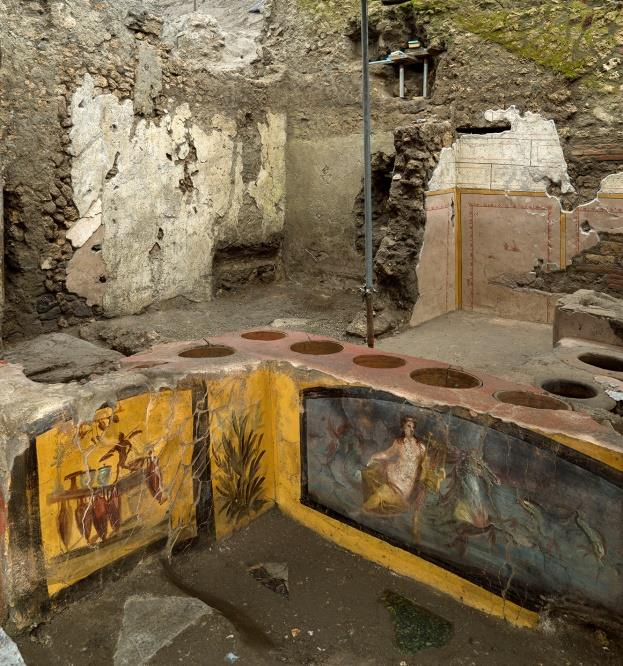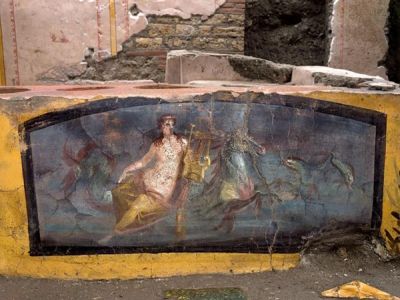Archaeologists in the ancient city of Pompeii — buried in a volcanic eruption in 79 AD — have unearthed a 2,000-year-old food stall. This new finding has given researchers clues about the snacking habits of the ancient citizens of the Roman city.
The shop for hot food and drinks, known as a termopolium, was found in the archaeological park's Regio V site. However, the location of the discovery is not yet open for public visit.
Ancient Food Stall

The researchers found traces of food in some of the deep terra cotta jars that used to contain hot food which shop keepers lowered into a counter with circular holes.
The front section of the ancient food counter was decorated with colored frescoes, while some depicting animals that were part of the food sold at the stall, including chicken and ducks. Massimo Ossana, director of the Pompeii archaeological park said: "This is an extraordinary find. It's the first time we are excavating an entire termopolium."
The discovery also included the finding of a decorated bronze drinking bowl called patera, ceramic jars used for cooking soups and stews, wine flasks, and amphora. Excavators also found a large dolium or earthenware vessel that still contained wine. Teresa Virtuoso, the archaeologist overseeing the team excavating the site, said "It was full of lapilli, and removing them released a very intense aroma of the wine. It was so strong we could smell it through our masks."
They found another dolium, in which archaeologists noticed the remains of a mouse, suggesting that the vessel might have contained some kind of grains. They believe that the mouse fell victim to the volcanic eruption which destroyed the city. In 2019, a segment of the counter was partially dug up during the work to shore up Pompeii's oft-crumbling ruins. Since then, archaeologists kept digging to find a multi-sided-counter.




The ancient city of Pompeii, destroyed after the volcanic eruption of Mount Vesuvius, is located 23 kilometers southwest of Naples. It was home to about 13,000 people when the city was buried under volcanic ash, pumice pebbles, and dust.
An archaeologist at Pompeii, Valeria Amoretti, said the preliminary analysis showed that the figures drawn on the front of the ancient counter represent at least, in part, the food and drink that were sold there. Traces of pork, fish, snails, and beef had been found in the containers at the site. She called this discovery a "testimony to the great variety of animal products used to prepare dishes."
As of now, almost two-thirds of the ancient town has been uncovered, since the beginning of the excavation program which started in around 1750. Pompeii is currently one of Italy's most popular tourist attractions and known as a UNESCO World Heritage Site.









